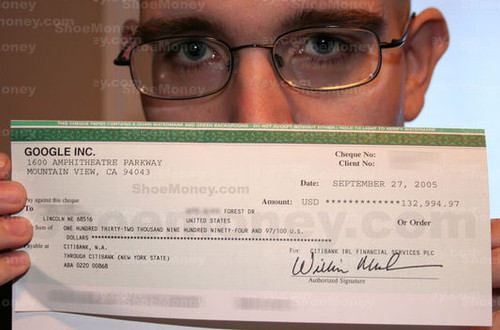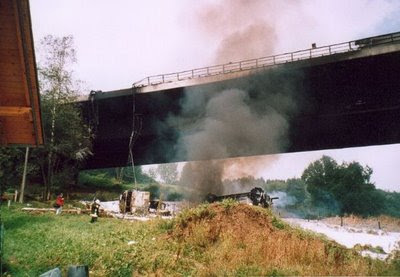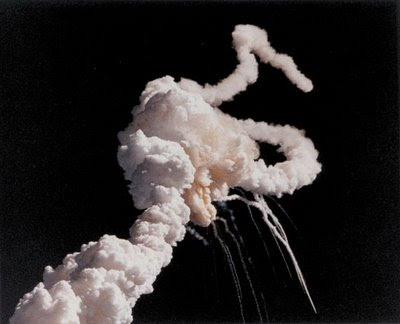Naming a business is like laying the cornerstone of a building. Once it's in place, the entire foundation and structure is aligned to that original stone. If it's off, the rest of the building is off, and the misalignment becomes amplified. So if you have that gnawing sense that choosing a name for your new business is vitally important - you're right. With 18 years in the naming and branding business, I've witnessed the good, the bad, and the really bad. Here's how you can avoid the worst of the mistakes and get off to a good start.
Mistake 1: The Committee (Getting all your clients, employees and family members involved)
We live in a democratic society and it seems like the right thing to do - involving everyone in an important decision. This approach, however, presents a few problems. The first and most obvious fact is that you will end up choosing only one name - so you risk alienating the very people you are trying to involve. Second, you often end up with a consensus decision, resulting in a very safe and very vanilla name. A better method is to involve only the key decision makers, the fewer the better, and select only the people you feel have the company's best interests at heart. The need for personal recognition can skew results - so you are best served by those who can park their egos at the door. Also, make sure you have some right brain types in the mix. Too many left brains and the name often ends up too literal and descriptive.
Mistake 2: The Train Wreck (Taking two words and colliding them head on)
When forced to come up with a creative name, many aspiring entrepreneurs will simply take part of an adjective and weld it onto a noun. The results are names that have a certain twisted rationale to them, but look and sound awful. Someone starting a high-end service franchise then becomes QualiServe. It's a bit like mixing chocolate syrup with ketchup - nothing wrong with either, but they just don't go together. Other common truncations include Ameri, Tech, Corp, Tron, etc. The problem with this approach is that it's simply forced � and it sounds that way.
Mistake 3: Where's Waldo? (Names so plain they'll never stand out in a crowd)
The first company in a category can get away with this one. Hence, you have General Motors, General Electric, etc. But once you have competition, it requires differentiation. Imagine if Yahoo! had come out as GeneralInternetDirectory.com? It would be much more descriptive, but hardly memorable. And with the onslaught of new media and advertising channels, it's more important than ever to carve out your niche by displaying your uniqueness. Nothing does that better than a well-conceived name.
Mistake 4: The Atlas Approach (Using a map to name your company)
In the zeal to start a new company, many businesses choose to use their city, state or region as part of their name. While this may actually help in the beginning, it often becomes a hindrance as a company grows. One client came to me with complaints he was serving more of the market than his name implied. He had aptly called it St. Pete Plumbing since he hailed from St. Petersburg, Florida. But yellow page shoppers assumed that was also his entire service area. With a little creative tinkering we changed the image of St. Pete from a city to the image of St. Pete himself, complete with wings and a plumber's wrench. The new tag line? "We work miracles!"
Other companies have struggled with the same issue. Minnesota Manufacturing and Mining was growing beyond their industry and their state. To avoid limiting their growth they became 3M, a company now known for innovation. Kentucky Fried Chicken is now KFC, de-emphasizing the regional nature of the original name. Both of these companies made strategic moves to avoid stifling their growth. Learn from them and you can avoid this potential bottleneck.
Mistake 5: Cliche' You Say? (A good name is worth a thousand words)
Once past the literal, descriptive stage, the thought process usually turns to metaphors. These can be great if they are not overly used to the point of trite. Since many companies think of themselves as the top in their industry, the world is full of names like Summit, Apex, Pinnacle, Peak, etc. While there is nothing inherently wrong with these names, they are just overworked. Look for combinations of positive words and metaphors and you will be much better served. A good example is the Fortune 1000 data storage company Iron Mountain, which conveys strength and security without sounding commonplace.
Mistake 6: Hide the Meaning (Make it so obscure, the customer will never know!)
It's great for a name to have a special meaning or significance. It sets up a story that can be used to tell the company message. But if the reference is too obscure and too hard to spell and pronounce, you may never have the opportunity to speak to that customer. They will simply pass you by as irrelevant. So resist the urge to name your company after the mythical Greek god of fast service or the Latin phrase for "We're number one!" If a name has a natural, intuitive sound and a special meaning, it can work. If it's too complex and puzzling, it will remain a mystery to your customers. This is especially true if you are reaching out to a mass audience.
I pushed the envelope a little on this one myself, naming my branding firm Tungsten, after the metal that Thomas Edison used to create brilliant light. However, my clientele consists of knowledgeable professionals who appreciate a good metaphor and expect a branding firm to have a story behind its name. It's also a way to differentiate my services (illuminated, bright, brilliant). So while it works for a branding firm, it would not do well as an ice cream parlor.
Mistake 7: The Campbell's Approach (Using alphabet soup to name your firm)
This is a trend that is thankfully wearing off. Driven by the need for a matching domain name, many companies have resorted to awkwardly constructed or purposefully misspelled names. The results are company names that sound more like prescription drugs than real life businesses. Mistake 2 sometimes gets combined with this one and results in a name like KwaliTronix (or worse - mistakes 2, 4 ... 7, resulting in KwalTronixUSA). It's amazing how good some names begin to sound after searching for available domain names all night. But resist the urge. Avoid using a "K" in place of a "Q" or a "Ph" in place of an "F." This makes spelling the name and locating you on the Internet all that much harder.
It's not that coined or invented names cannot work; they often do. Take for example, Xerox or Kodak. But keep it mind, names like these have no intrinsic or linguistic meaning, so they rely heavily on advertising � and that gets expensive. Many of the companies that use this approach were either first in category or had large marketing budgets. Verizon spent millions on their rebranding effort. So did Accenture. So check your pocketbook before you check into these types of names.
Mistake 8: Sit On It. (When in doubt, make no change at all)
Many business owners know they have a problem with their name and just hope it will somehow magically resolve itself. The original name for one of my clients was "Portables," which reminded some people of the outdoor restrooms or the portable classrooms - neither one a good association. This added to the confusion when phone operators tried to explain their new concept of moving and storage. After some careful tweaking, we came up with the name PODS, an acronym for Portable On Demand Storage. The rest is quickly becoming history as they expand both nationally and internationally. Peter Warhust, President and one of the original founders states, "For the record, changing our name to PODS was one of the best moves we ever made."
Exercise Experience, a former Florida-based company, was frequently confused with a health club. In reality, they sold very high-end fitness equipment. This brings up a very key point - it's better to have a name that gives no impression than a name that gives a wrong impression. Much of the ad budget we spent on Exercise Experience was used to clarify that they sold fitness equipment. This was valuable airtime that could have been put to better use selling the equipment rather than explaining the business. Ultimately, the company folded. It's not to say it was solely because of the name, but I believe it was a factor.
Mike Harper of Huntington Beach, CA, bought a thirty-year-old janitorial and building maintenance company named Regency. We both agreed it sounded more like a downtown movie theatre than a progressive facilities management firm. After a thorough naming search, we developed the name Spruce Facilities Management. Spruce not only conveyed the environmentally friendly image of a spruce tree (something important to the client), it also meant, "to clean up." The new tag line fell right in place Spruce "The Everclean Company."
It's only a matter of time before Southwest Airlines and Burlington Coat Factory and others who have successfully outgrown their original markets begin to question their positioning. Much like 3M and KFC, they may need to make a change to keep pace with their growth and image.
In the fever to start your new business or expand a current one, take time to think through some of these issues. According to the late Henry Ford, "Thinking is the hardest work there is, which is probably the reason why so few engage in it." Albert Einstein took it one step further claiming, "Imagination is more important than knowledge." By tapping into your creativity and avoiding these potential pitfalls, you'll be able to create a name that works both short and long term � one that allows for future growth. Like the original cornerstone of a building, it will support upward expansion as your company reaches new heights.
Mistake 1: The Committee (Getting all your clients, employees and family members involved)
We live in a democratic society and it seems like the right thing to do - involving everyone in an important decision. This approach, however, presents a few problems. The first and most obvious fact is that you will end up choosing only one name - so you risk alienating the very people you are trying to involve. Second, you often end up with a consensus decision, resulting in a very safe and very vanilla name. A better method is to involve only the key decision makers, the fewer the better, and select only the people you feel have the company's best interests at heart. The need for personal recognition can skew results - so you are best served by those who can park their egos at the door. Also, make sure you have some right brain types in the mix. Too many left brains and the name often ends up too literal and descriptive.
Mistake 2: The Train Wreck (Taking two words and colliding them head on)
When forced to come up with a creative name, many aspiring entrepreneurs will simply take part of an adjective and weld it onto a noun. The results are names that have a certain twisted rationale to them, but look and sound awful. Someone starting a high-end service franchise then becomes QualiServe. It's a bit like mixing chocolate syrup with ketchup - nothing wrong with either, but they just don't go together. Other common truncations include Ameri, Tech, Corp, Tron, etc. The problem with this approach is that it's simply forced � and it sounds that way.
Mistake 3: Where's Waldo? (Names so plain they'll never stand out in a crowd)
The first company in a category can get away with this one. Hence, you have General Motors, General Electric, etc. But once you have competition, it requires differentiation. Imagine if Yahoo! had come out as GeneralInternetDirectory.com? It would be much more descriptive, but hardly memorable. And with the onslaught of new media and advertising channels, it's more important than ever to carve out your niche by displaying your uniqueness. Nothing does that better than a well-conceived name.
Mistake 4: The Atlas Approach (Using a map to name your company)
In the zeal to start a new company, many businesses choose to use their city, state or region as part of their name. While this may actually help in the beginning, it often becomes a hindrance as a company grows. One client came to me with complaints he was serving more of the market than his name implied. He had aptly called it St. Pete Plumbing since he hailed from St. Petersburg, Florida. But yellow page shoppers assumed that was also his entire service area. With a little creative tinkering we changed the image of St. Pete from a city to the image of St. Pete himself, complete with wings and a plumber's wrench. The new tag line? "We work miracles!"
Other companies have struggled with the same issue. Minnesota Manufacturing and Mining was growing beyond their industry and their state. To avoid limiting their growth they became 3M, a company now known for innovation. Kentucky Fried Chicken is now KFC, de-emphasizing the regional nature of the original name. Both of these companies made strategic moves to avoid stifling their growth. Learn from them and you can avoid this potential bottleneck.
Mistake 5: Cliche' You Say? (A good name is worth a thousand words)
Once past the literal, descriptive stage, the thought process usually turns to metaphors. These can be great if they are not overly used to the point of trite. Since many companies think of themselves as the top in their industry, the world is full of names like Summit, Apex, Pinnacle, Peak, etc. While there is nothing inherently wrong with these names, they are just overworked. Look for combinations of positive words and metaphors and you will be much better served. A good example is the Fortune 1000 data storage company Iron Mountain, which conveys strength and security without sounding commonplace.
Mistake 6: Hide the Meaning (Make it so obscure, the customer will never know!)
It's great for a name to have a special meaning or significance. It sets up a story that can be used to tell the company message. But if the reference is too obscure and too hard to spell and pronounce, you may never have the opportunity to speak to that customer. They will simply pass you by as irrelevant. So resist the urge to name your company after the mythical Greek god of fast service or the Latin phrase for "We're number one!" If a name has a natural, intuitive sound and a special meaning, it can work. If it's too complex and puzzling, it will remain a mystery to your customers. This is especially true if you are reaching out to a mass audience.
I pushed the envelope a little on this one myself, naming my branding firm Tungsten, after the metal that Thomas Edison used to create brilliant light. However, my clientele consists of knowledgeable professionals who appreciate a good metaphor and expect a branding firm to have a story behind its name. It's also a way to differentiate my services (illuminated, bright, brilliant). So while it works for a branding firm, it would not do well as an ice cream parlor.
Mistake 7: The Campbell's Approach (Using alphabet soup to name your firm)
This is a trend that is thankfully wearing off. Driven by the need for a matching domain name, many companies have resorted to awkwardly constructed or purposefully misspelled names. The results are company names that sound more like prescription drugs than real life businesses. Mistake 2 sometimes gets combined with this one and results in a name like KwaliTronix (or worse - mistakes 2, 4 ... 7, resulting in KwalTronixUSA). It's amazing how good some names begin to sound after searching for available domain names all night. But resist the urge. Avoid using a "K" in place of a "Q" or a "Ph" in place of an "F." This makes spelling the name and locating you on the Internet all that much harder.
It's not that coined or invented names cannot work; they often do. Take for example, Xerox or Kodak. But keep it mind, names like these have no intrinsic or linguistic meaning, so they rely heavily on advertising � and that gets expensive. Many of the companies that use this approach were either first in category or had large marketing budgets. Verizon spent millions on their rebranding effort. So did Accenture. So check your pocketbook before you check into these types of names.
Mistake 8: Sit On It. (When in doubt, make no change at all)
Many business owners know they have a problem with their name and just hope it will somehow magically resolve itself. The original name for one of my clients was "Portables," which reminded some people of the outdoor restrooms or the portable classrooms - neither one a good association. This added to the confusion when phone operators tried to explain their new concept of moving and storage. After some careful tweaking, we came up with the name PODS, an acronym for Portable On Demand Storage. The rest is quickly becoming history as they expand both nationally and internationally. Peter Warhust, President and one of the original founders states, "For the record, changing our name to PODS was one of the best moves we ever made."
Exercise Experience, a former Florida-based company, was frequently confused with a health club. In reality, they sold very high-end fitness equipment. This brings up a very key point - it's better to have a name that gives no impression than a name that gives a wrong impression. Much of the ad budget we spent on Exercise Experience was used to clarify that they sold fitness equipment. This was valuable airtime that could have been put to better use selling the equipment rather than explaining the business. Ultimately, the company folded. It's not to say it was solely because of the name, but I believe it was a factor.
Mike Harper of Huntington Beach, CA, bought a thirty-year-old janitorial and building maintenance company named Regency. We both agreed it sounded more like a downtown movie theatre than a progressive facilities management firm. After a thorough naming search, we developed the name Spruce Facilities Management. Spruce not only conveyed the environmentally friendly image of a spruce tree (something important to the client), it also meant, "to clean up." The new tag line fell right in place Spruce "The Everclean Company."
It's only a matter of time before Southwest Airlines and Burlington Coat Factory and others who have successfully outgrown their original markets begin to question their positioning. Much like 3M and KFC, they may need to make a change to keep pace with their growth and image.
In the fever to start your new business or expand a current one, take time to think through some of these issues. According to the late Henry Ford, "Thinking is the hardest work there is, which is probably the reason why so few engage in it." Albert Einstein took it one step further claiming, "Imagination is more important than knowledge." By tapping into your creativity and avoiding these potential pitfalls, you'll be able to create a name that works both short and long term � one that allows for future growth. Like the original cornerstone of a building, it will support upward expansion as your company reaches new heights.







